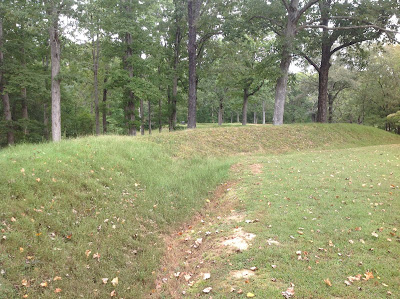 |
| RSM Russain Cossacks for my SYW Russian army. Click on all pictures to enlarge. |
I have been on a good painting frenzy of late and I finished a second set of 12 Russian Cossacks. As with the others, these are RSM figures mounted on Minden light cavalry horses. The combination looks very lifelike and visually appealing.
I find that the RSM and Minden figures are very compatible and so I use both figure ranges in my SYW armies.
 |
| A closer view of the new Cossacks, wearing short hats. |
The picture below gives one a sense of how the whole Cossack unit will look. The grassed set of 12 wear the tall fur hat and the ungrassed set of 12 wear the short hat.
 |
| Two squadrons of RSM Russian Cossacks mounted on Minden Horses. The lefthand unit will be grassed later today after the ground spackle has dried. |
Next in the Queue
I have another dozen Russian dragoons to paint to build the regiment up to 24 figures. I am giving them a coat of grey primer today so that I can start painting them tomorrow. After that, I will either turn to the Horvat Hussars (using the Minden Austrian hussars) or the 3rd Cuirassier Regiment (using Minden Austrian cuirassiers).
Because 18th Century armies and uniforms are very similar in look and style, it is relatively easy to recruit figures from one country's troops for use in another country's troops, in the event that the needed figures are not yet a part of the Minden Miniatures figure range. I find that the French infantry with turnbacks work for Russian Musketeers, RSM Russian Grenadiers are used in my army, Hanoverian Horse, Austrian Hussars and Austrian Cuirassiers suitably fill in for their Russian counterparts.
Minden already makes the Russian artillery crewmen and some of the more common Russian artillery pieces, so this combat arm is fairly well handled within the range.
Because 18th Century armies and uniforms are very similar in look and style, it is relatively easy to recruit figures from one country's troops for use in another country's troops, in the event that the needed figures are not yet a part of the Minden Miniatures figure range. I find that the French infantry with turnbacks work for Russian Musketeers, RSM Russian Grenadiers are used in my army, Hanoverian Horse, Austrian Hussars and Austrian Cuirassiers suitably fill in for their Russian counterparts.
Minden already makes the Russian artillery crewmen and some of the more common Russian artillery pieces, so this combat arm is fairly well handled within the range.
My SYW Russian Army, so Far
With the completion of the Cossacks, I now have enough Russian cavalry to fight a small battle - 24 Horse Grenadiers, 24 Cossacks and 12 Dragoons (up to 24 by the end of this week). I could also use some of my Austrian cavalry to augment the Russians, if needed.
The infantry contingent has 3 musketeer battalions and one grenadier battalion for a total of four battalions. In a pinch, I could use my green coated Hesse Seewald battalions as Russians (in fact, I had this in mind when I started painting my own Hesse Seewald regiments).
The artillery contingent has four cannon: a Shuvulov Secret Howitzer, a 12 pound Howitzer, a 12 pound smoothbore and a 6 pound smoothbore. I still need to paint limber teams for my cannon. I am thinking that I will delegate the 6 pounders to the infantry to use as regimental guns, which the Russians often did. I have been reading that the Shuvulov Howitzers took longer to reload, so in my rules they will only be able to fire every other turn.
I have some new Russian infantry wearing their Summer kit at Griffin Moulds awaiting the production of master moulds. If the figures pass my muster, then I will put them into production moulds and add them to the Minden range. I sculpted the figures using Richard Ansell's dollies, so there should be similarity with the rest of the Minden figures that Richard sculpted. My own effort is passable, but nothing up to the standard of Richard. So if my sculpts do not look good to my eye, then I won't put them in the range. So we shall see.
First Anniversay of my Retirement
Today, October 31st, is the one year anniversary of my retirement from work and my new career as a gentleman of leisure. As one of my longtime friends said, "Jim, you were made for retirement." I can't dispute that.
Retirement has given me more time to devote to the figure business and to painting figures, so that part of it is great. I have also played a number of solo wargames which I do to generate pictures for this blog or test out scenarios and rules changes. My solo game year to date include:
Reichenbach
Fontenoy
Cowpens
Cheraw (AWI campaign game)
Winnsboro (AWI campaign game)
Fisher's Crossing (AWI campaign game)
McDowell's Camp (AWI campaign game)
I like the solo games because they give me the opportunity to do what little army men were made for - playing wargames.
I also did a little bit of traveling this year, going to the UK in June and Fort Donelson, Tennessee in October. I also did the Christopher Duffy tour of SYW battlefields last October, but that took place before I officially retired. I would like to visit some more ACW battlefields in the USA this next year and a return trip to the UK for another wargame mini convention is definitely in the works.
Year Two of Retirement should be just as busy and so I'm looking forward to seeing how the year unfolds.




























































